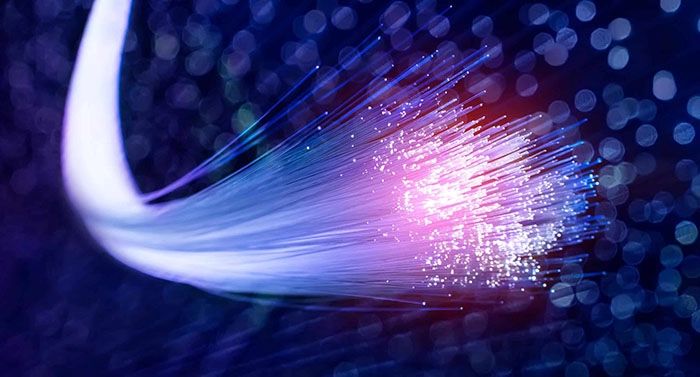
Blog
blog Location: Home > Blog > Technical Article
Location: Home > Blog > Technical Article
 Update Time:2025-08-15
Update Time:2025-08-15 Traffic:
Traffic: 
- Introduction
- The Importance of Optical Communication
- The Role of Fiber Optic Color Coding
- Understanding Fiber Optic Color Coding
- The Basics of Color - Coded Fibers
- Color Meanings in Fiber Optic Cables
- Standards for Fiber Optic Color Coding
- International Standards
- Industry - Specific Standards
- Applications of Fiber Optic Color Coding
- In Telecommunication Networks
- In Data Centers
- In Other Specialized Fields
- Conclusion
- The Significance of Mastering Fiber Optic Color Coding
- Future Trends in Fiber Optic Color Coding
Optical communication has witnessed explosive growth in recent years, enabling high - speed and large - capacity data transmission over long distances. Fiber optic cables, as the medium for optical communication, are the backbone of modern communication infrastructure. Fiber optic color coding is a key element that helps in the identification, management, and operation of these cables.
The Importance of Optical Communication: In today's digital age, the demand for fast and reliable data transfer is ever - increasing. Optical communication, with its high bandwidth and low signal attenuation, has become the preferred choice for long - distance and high - volume data transmission. Whether it's for Internet backbone connections, mobile network backhauls, or data center interconnections, optical communication plays a vital role in ensuring seamless communication.
The Role of Fiber Optic Color Coding: Fiber optic color coding is a system used to identify different types of fibers within a cable. It provides essential information about the fiber's characteristics, such as its mode (single - mode or multi - mode), its core diameter, and its application. This color - coding system simplifies the installation, maintenance, and troubleshooting processes of fiber optic systems.
The Basics of Color - Coded Fibers: Each color in the fiber optic color - coding system has a specific meaning. The colors are usually applied to the buffer or jacket of the fiber. For example, in a multi - fiber cable, different colors are used to distinguish between individual fibers. This allows technicians to quickly identify the correct fiber for a particular connection or operation.
Color Meanings in Fiber Optic Cables: Single - mode fibers often have specific color codes. For instance, yellow is commonly used to indicate a single - mode fiber. Multi - mode fibers, on the other hand, may be color - coded in different ways. Orange is often associated with 50/125μm multi - mode fibers, while aqua may be used for 62.5/125μm multi - mode fibers. These color codes are not arbitrary but are based on industry - wide standards and practices.
International Standards: There are international standards, such as those set by the International Electrotechnical Commission (IEC), that govern fiber optic color coding. These standards ensure consistency across different manufacturers and regions. The IEC standards define the color codes for various fiber types and their applications, which helps in interoperability between different fiber optic products.
Industry - Specific Standards: In addition to international standards, some industries have their own specific color - coding requirements. For example, in the data center industry, there may be additional color - coding rules to distinguish between different types of fibers used for different purposes, such as server - to - switch connections or inter - rack connections. These industry - specific standards further enhance the management and organization of fiber optic systems.
In Telecommunication Networks: In telecommunication networks, fiber optic color coding is crucial for proper cable management. Technicians can quickly identify the right fiber for a specific connection, reducing the time and effort required for installation and maintenance. It also helps in troubleshooting, as the color - coded fibers can be traced back to their source and destination easily.
In Data Centers: Data centers rely heavily on fiber optic connections for high - speed data transfer. Fiber optic color coding in data centers helps in organizing the complex network of fibers. It allows for easy identification of fibers used for different functions, such as storage area network (SAN) connections or high - speed Ethernet links. This improves the overall efficiency and reliability of the data center's communication infrastructure.
In Other Specialized Fields: Fiber optic color coding is also important in other specialized fields, such as aerospace and military applications. In these fields, where precision and reliability are of utmost importance, the color - coding system helps in ensuring the correct installation and operation of fiber optic systems.
The Significance of Mastering Fiber Optic Color Coding: Mastering fiber optic color coding is essential for anyone working in the field of optical communication. It enables accurate and efficient installation, maintenance, and troubleshooting of fiber optic systems, reducing the risk of errors and downtime. By understanding the color - coding system, professionals can make informed decisions and ensure the smooth operation of optical communication networks.
Future Trends in Fiber Optic Color Coding: As the field of optical communication continues to evolve, so will the requirements for fiber optic color coding. With the development of new fiber types and applications, there may be a need for updated color - coding standards. Additionally, the integration of smart technologies into fiber optic systems may bring new challenges and opportunities for color - coding, such as the ability to remotely identify and manage fibers based on their color - coded information.
